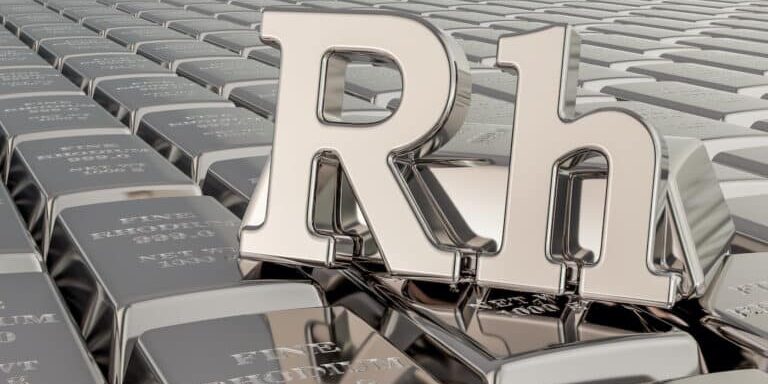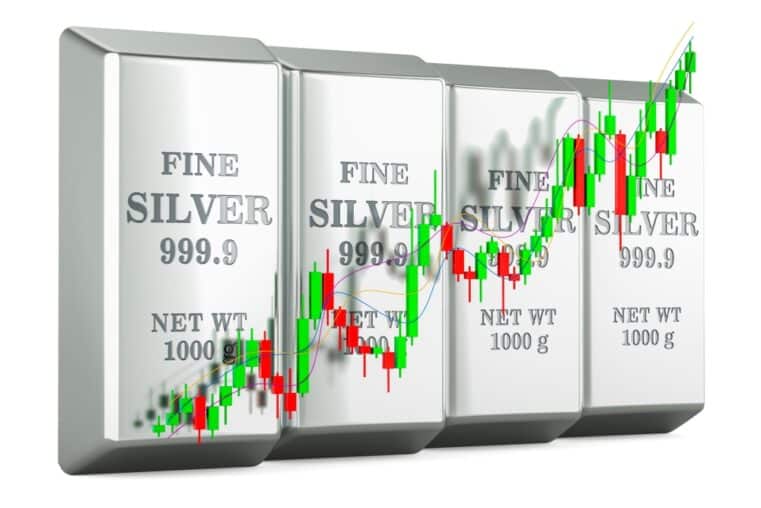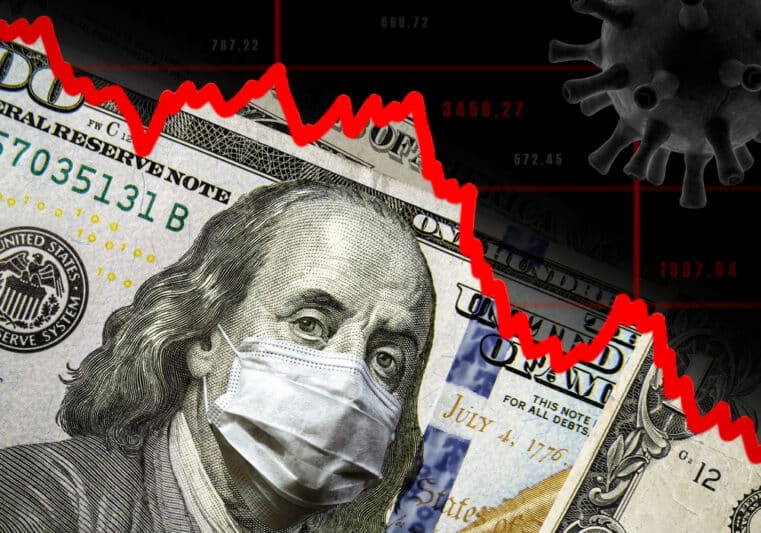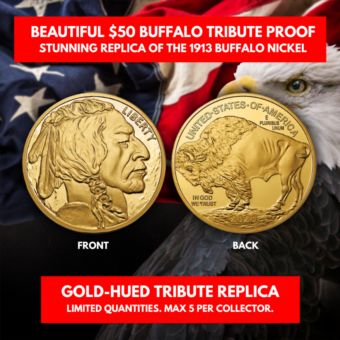
What Is Rhodium and What Is Rhodium Metal Used For?
Rhodium is a silver-white metallic element that is highly reflective and resistant to corrosion. It is considered the rarest and most valuable precious metal in the world - well above gold or silver. The name rhodium comes from the Greek word “rhodon,” meaning rose, the name for the rose-red color of its salts.
The Facts
- Atomic number (number of protons in the nucleus): 45
- Atomic symbol (on the periodic table of the elements): Rh
- Atomic weight (average mass of the atom): 102.90550
- Density: 12.41 grams per cubic centimeter
- Phase at room temperature: Solid
- Melting Point: 3,567 degrees F (1,964 degrees C)
- Boiling Point: 6,683 degrees F (3,695 degrees C)
- Number of isotopes (atoms of the same element with a different number of neutrons): 24 whose half-lives are known, one stable
- Most common isotopes: One stable isotope Rh-103
Properties
Rhodium is one of the six platinum group metals: platinum, palladium, rhodium, osmium, iridium, and ruthenium. It is also classified as a noble metal, meaning that it does not react to oxygen easily, acts as a fantastic catalyst, and is resistant to corrosion and oxidation. Some common characteristics of the platinum group metals include high melting points, general non-toxicity, and resistance to wear, oxidation, and corrosion.
Rhodium is the rarest of the platinum group, only occurring up to one part per 200 million in the Earth’s crust. Rhodium has a lower density and a higher melting point than platinum. Rhodium is unaffected by air and water up to 1,112 Fahrenheit (600 degrees Celsius).
Discovery
Rhodium was discovered in 1803 by English chemist William Hyde Wollaston shortly after he had discovered the element palladium. Wollaston extracted rhodium from a piece of platinum ore that he had obtained from South America. Rhodium often occurs with deposits of platinum and is commonly obtained from the mining and refining of platinum.
Wollaston was first alerted to the possibility of a new element in platinum by the French chemist Hippolyte-Victor Collet-Descotils, who believed that the red color of some platinum salts was due to the presence of unidentified metal. After a series of chemical reactions, Wollaston was able to remove the platinum and palladium from the sample of platinum ore. He was left with a dark red powder which turned out to be sodium rhodium chloride.
Rhodium Uses
The main use of rhodium is in catalytic converters designed to clean vehicle emissions. The price of rhodium remains very high. Rhodium - often together with palladium and/or platinum - accomplishes this by reducing nitrogen oxide in the exhaust gas. As a result of its use in catalytic converters, automotive emissions of carbon monoxide, unburned hydrocarbons, and nitrogen oxides have been greatly reduced. Without rhodium catalysts, the air in our cities would be much worse due to vehicle exhausts.
Since rhodium is quite brilliant and resistant to tarnishing, it is used as a finish for rhodium plated jewelry, searchlights, and mirrors. For rhodium plated jewelry it involves plating the jewelry with a surface that guards against scratches that gives a reflective white appearance and luster. It is most commonly found on white gold jewelry but can also be used on sterling silver and other materials. Rhodium plating can also be referred to as rhodium flashing or rhodium dip and include re-plating. There are many upsides to rhodium-plated jewelry. First, a rhodium plate increases shine, luster, and durability. Additionally, it will make the jewelry more resistant to scratches, and if it’s silver, less prone to tarnishing. Another popular benefit to rhodium plated jewelry is the fact that it makes the jewelry hypoallergenic because it is nickel-free. How long does rhodium plating last? A very long time before jewelry must be re-plated with rhodium.
It is also alloyed with a layer of rhodium and platinum for aircraft turbine engines. It is a member of the platinum group and platinum family. In the chemical industry, rhodium is used as a catalyst in the making of nitric acid, acetic acid, and hydrogenation reactions. Other uses for rhodium are coating optic fibers, crucibles, thermocouple elements, and headlight reflectors. Since it has a low electrical resistance and is highly resistant to corrosion, it is used as an electrical contact material as well.
Rhodium is often alloyed with platinum and iridium to make an oxidation-resistant metal that can stand against high temperatures. These alloys are used in furnace windings, pen nibs, phonograph needles, high-temperature thermocouple and resistance wires, electrodes for aircraft spark plugs, bearings, and electrical contacts.
Rhodium has no known biological use and no known use for life processes. While some compounds of rhodium are carcinogenic, there are almost no reported cases of humans being affected by this element in any way. This may be because rhodium compounds are encountered so rarely. Test on plants has shown that it is the least toxic member of the platinum group of metals. Although rhodium is generally considered non-toxic, some of its compounds are toxic and carcinogenic. Naturally occurring rhodium consists of just one stable isotope: Rh-103.
An alloy of rhodium-platinum is used in heart pacemakers. South African PGM producers extract a mix of metal comprising approximately 60 percent platinum, 30 percent palladium, and 10 percent rhodium. Rhodium is resistant to most acids. Rhodium metal is rarely used by itself and almost always as an alloy. Of the three precious metals (rhodium, platinum, and palladium) currently used in vehicle catalytic converters, rhodium has by far the highest activity for the removal of nitrogen oxides (NOx) from the exhaust. It also has very high activity for the oxidation of hydrocarbons (HC) and carbon monoxide (CO) and very good resistance to the poisons present in the exhaust stream. All rhodium compounds are easily reduced or decomposed through heating to create powdered (or sponge) metal.
The primary use of this element is an alloying agent for hardening platinum and palladium. These alloys are used in furnace windings, bushings for glass fiber production, thermocouple elements, electrodes for aircraft spark plugs, and laboratory crucibles. It is used as an electrical contact material due to its low electrical resistance, low and stable contact resistance, and high corrosion resistance. Plated rhodium, made by electroplating or evaporation, is extremely hard and is used for optical instruments.
This metal finds use in jewelry and for decorations as rhodium-plated jewelry. It is electroplated on white gold to give it a reflective white surface. This is known as rhodium plating or flashing in the jewelry business. It is also a highly useful catalyst in several industrial processes (notably it is used in the catalytic system of automobile catalytic converters and for catalytic carbonylation of methanol to produce acetic acid). It is used to catalyze the addition of hydrosilanes to a double bond, a process important in the manufacture of certain silicone rubbers. The complex of a rhodium ion with BINAP gives a widely used chiral catalyst for chiral synthesis, as in the synthesis of menthol.
The industrial extraction of rhodium is complex as the metal occurs in ores mixed with other metals such as palladium, silver, platinum, and gold. It is found in platinum ores and obtained free as a white inert metal which is very difficult to fuse. Principal sources of this element are located in South Africa, in river sands of the Ural Mountains in Russia, in North and South America, and also in the copper-nickel sulfide mining area of Sudbury, Ontario region, Canada. Although the quantity at Sudbury is very small, a large amount of nickel ore processed makes rhodium recovery cost-effective.
The main exporter of rhodium is South Africa (80%) followed by Russia. However, the annual world production of this element is only about 20 tons and there are very few rhodium minerals. Moreover, it is generally difficult to determine if a rock sample does or does not contain platinum group elements. As of 2006, rhodium cost approximately six times as much as gold, but weight.
According to the US Geological Survey, autocatalysts accounted for 77 of all rhodium demand in 2010. Three-way catalytic converters for gasoline engines use rhodium to catalyze the reduction of nitrogen oxide to nitrogen. Roughly 5 percent to 7 percent of global rhodium consumption is used by the chemical sector. Rhodium and platinum-rhodium catalysts are used in the production of exo-alcohol manufacturing as well as to produce nitric oxide, a raw material for fertilizers, explosives, and nitric acid.
Glass production accounts for a further 3 percent to 6 percent of rhodium consumption each year. Because of their high melting points, strength, and resistance to corrosion, rhodium plate, and platinum can be alloyed to form vessels that hold and shape molten glass. Also of importance is that alloys containing rhodium do not react with, or oxidize, the glass at high temperatures. Other rhodium used in glass production includes forming bushings, which are used to produce glass fiber by drawing molten glass through holes. In the production of liquid crystal displays (LCDs) because of the higher temperature required to melt raw materials and the quality of glass required. In the production of screen glass for cathode ray tube (CRT) displays.
Mining for Rhodium
Commercial rhodium is generally obtained as a byproduct of copper and nickel refining. In nature, rhodium can occur uncombined or with other platinum minerals. It can be found in river sands in North and South America and in copper-nickel sulfide ores in Ontario, Canada. Due to its rarity, the small market size, and the concentrated supply - South Africa alone produces roughly 80 percent of the world’s rhodium - prices are typically volatile. For example, rhodium briefly reached $10,025 an ounce just before the 2008 financial crisis hit, but then plunged 90 percent before the end of the year. In 2017, the price of rhodium doubled, adding $1,000 an ounce since hitting 12-year-lows mid-2016.
The mining supply of rhodium in 2019 was over 750,000oz and recycled supply was 315,000oz, resulting in a deficit of approximately 50,000oz. Rhodium supply is inelastic to demand, which means that if demand increases, there is no fast way to ramp-up production or supply. There are many reasons for this. The primary reason being rhodium content in the earth’s crust is extremely rare, and the metal is mined as a by-product of platinum and palladium mining or nickel mining. There is no such thing as a primary rhodium mine, and the major producers are all located in South Africa. South Africa produces over 85% of the global rhodium supply annually, with the majority of this supply being generated by the mining companies listed below (rhodium production listed as a percentage of overall mining production):
- Sibanye Stillwater (2019 rhodium production, 7% overall contributed 22% of revenue)
- Anglo Platinum (H12020 rhodium production, 7.5% overall contributed 34 % of revenue)
- Impala Platinum (H12020 rhodium production, 6.5% overall contributed 25% of revenue)
Due to the very deep nature of aging mines in South Africa that produce by-product rhodium, the metal supply has been largely stagnant in recent years. With platinum in oversupply and depressed in price since 2015, the South African mining companies face a conundrum. If these companies choose to mine more platinum to take advantage of the by-product rhodium, there is a risk of oversupplying the platinum market and depressing prices further.
Rhodium is extracted as a byproduct of platinum and nickel mining. Owing to its rarity and atomic number the complex and expensive process required to isolate the metal, there are very few naturally occurring ore bodies that provide economical sources of rhodium. Like most PGMs, rhodium production is focused around the Bushveld Complex in South Africa. The country accounts for 80 percent of the world’s rhodium production, while other sources include the Sudbury basin in Canada and the Norilsk Complex in Russia.
Platinum Group Metals (PGMs) are found in various minerals, including dunite, chromite, and norite. The first step in extracting rhodium from the ore is precipitating precious metals such as gold, silver, palladium, and platinum. Rhodium hydroxide is then precipitated out using sodium hydroxide. This compound is treated with ammonium chloride and sodium nitrate to form a precipitate of rhodium. The precipitate is dissolved in hydrochloric acid, and the solution is heated until residual contaminants are burnt off, leaving behind the pure rhodium metal.
According to Impala Platinum, global production of rhodium is limited to only about 1 million troy ounces annually (or roughly 28 metric tons) annually, whereas, in comparison, 207 metric tons of palladium were produced in 2011. About one-quarter of rhodium production comes from secondary sources, mainly recycled catalytic converters, while the remainder is extracted from the ore. Large rhodium producers include Anglo Platinum, Norilsk Nickel, and Impala Platinum.
Storing The Sun’s Energy
Although rhodium seems to have found a solid industry niche in cleaning car exhausts, many new research projects are showing that the precious metal may hold much more potential, particularly in its primary role as a catalyst. In one such study, Swiss researchers at the Paul Scherrer Institute (PSI) and the ETH Zurich developed a new chemical process that uses the sun’s thermal energy to convert carbon dioxide and water into high energy fuels. This chemical process involves a new material combination of cerium oxide and a small amount of rhodium as a catalyst. Their discovery is a major step toward the chemical storage of solar energy (which has been a very tricky problem for scientists). Their new findings are published in the journal Energy and Environmental Science.
Researchers have identified a way to harness the entire spectrum of sunlight and efficiently transform it into hydrogen for fuel. The method involves a single molecule - an air-stable complex called rhodium - that quickly turns solar energy into hydrogen. While most photocatalysts only absorb the sunlight, requiring another molecule to convert that energy into hydrogen, rhodium does all the work itself, which is why it is faster and more effective. That and its ability to absorb the entire spectrum of light is why the molecule can harness over 50% more solar energy than current solar cells.
The finding could lead to a powerful method of making clean alternatives to fuel things like hydrogen-powered vehicles. It could be an additional way for humans to transition away from fossil fuels that contribute to climate change towards environmentally friendly sources that do not. To make the system, rhodium atoms were constructed into a scaffold structure; that way, the molecule bonds have space in between each other, leaving room for sunlight to be “saved”. In this space, a chemical reaction occurs: two photons (elemental particles of sunlight that contain energy) are converted into two electrons. Even slow or sparse photons from low-energy sunlight are captured because the chemical reaction is direct.
There is a catch: the molecule is a scarce and precious metal, so it’s unbelievably expensive. Regardless, they are currently working on improving rhodium to produce hydrogen over a long period while also looking into ways to build the catalyst out of less costly materials.
Conclusion:
From rhodium plating of an engagement ring with the white gold that is rhodium in jewelry to its high value as precious metal rhodium is rare. From using rhodium as a source of the sun’s energy is a dramatic advance. Rhodium continues to be used as a catalytic converter in the exhaust of cars which helps the environment and leads to less smog and congestion in cities. This noble metal is scarce and rare and difficult to mine which leads to its high value. The value of rhodium is worth more than gold and silver.













